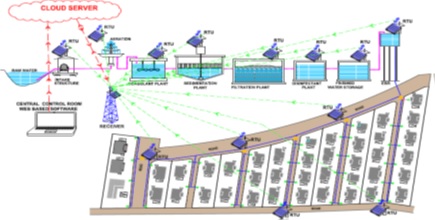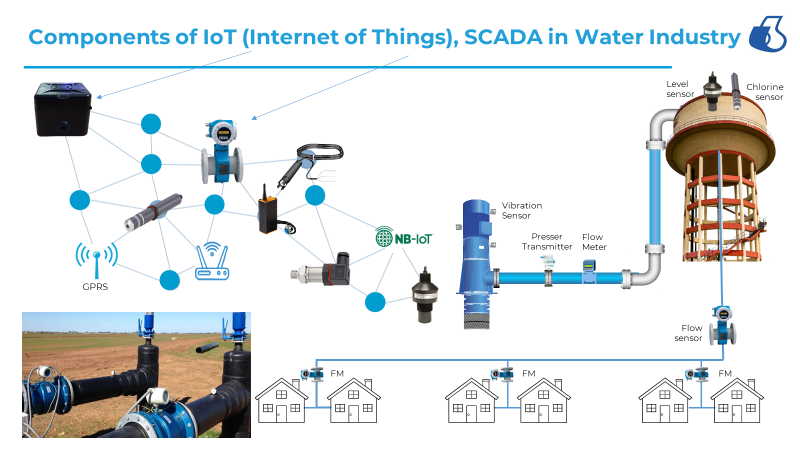By Santwana Sneha, Board Member, FINISH Societ
The Looming Water Crisis of India
Almost all of the world’s major cities have gone into the 21st century facing an environmental crisis, including India. Resource depletion, environmental degradation and climate change are among the greatest challenges we face today. In this context, the proper management of solid & liquid waste along with efficient resource recovery have become relevant aspects of environmental management systems that could support a circular economy and assist in addressing these global challenges. As a result of rapid urbanization, India is witnessing depletion of the water resources and continued pollution of the remaining fresh water bodies. This makes preservation of lakes and rivers of paramount importance. Wastewater is the sewage and non-potable water that flows back into the environment and most of it is untreated. The discharge of untreated wastewater is a major contributor to deteriorating health conditions and pollution of the nearby water bodies. Current situation in most of the villages and small towns can be summarised as below:
8 No common drain connecting all houses in most of the cases.
8 Non-operational infrastructure due to OPEX related challenges.
8 Discharge of waste water is often into local water bodies or on surface.
8 May contain chemical impurities from agricultural or small industrial waste water, needing specialized treatment in some cases.
8 May contain certain amount of partially treated sewage (from on-site facilities and toilets connected directly to drains)
. 8 Land is available but limited funds and skills.
8 Low level of awareness and accountability.
Waste water, if not treated well, can contaminate land, agriculture and eventually lead to contamination of vegetables, fruits, fish etc. and consuming these eatables may lead to diarrhea, skin infections, parasitic and bacterial infections. Collection and treatment of wastewater have a huge impact on the environment and economy, both at the local and global levels.
Types of Waste Water Waste
water can also be categorised into following three types
: 8 Domestic sewage: Domestic sewage also called as sanitary sewage, carries used water from houses and apartments. Domestic sewage is very likely to contain disease-causing microbes.
8 Industrial sewage: Industrial sewage is used water from manufacturing or chemical processes and usually contains specific and readily identifiable chemical compounds.
8 Storm sewage: Storm sewage, or storm water, is runoff from precipitation that is collected in a system of pipes or open channels.
Further domestic waste water or domestic sewage can be categorised into the following types:
Waste Water Treatment, Disposal & Reuse
The problem to address waste water management starts with conscious use of water leading to reduction in waste water generation. Once waste water is generated, it must be treated, reused and recycled before disposing into water bodies.
Waste WaterTreatment The size, capacity and type of wastewater treatment systems are determined by a various factor including:
8 Characteristics of effluents to be treated
8 Flow patterns and Flow management options
8 Availability of Power/Power source
8 Availability of Land
8 Availability skilled operators
8 Mechanism of O&M
8 Cost of installation and O&M (site dependent)
8 End use There are mainly three levels of wastewater treatment: primary, secondary, and tertiary (or advanced). Following three methods are likely to be part of most treatment systems for liquid waste management in rural areas
: 8 Wastewater Stabilization Ponds
8 Roughing filters or Rock Filters
Waste Water Disposal & Reuse
Waste water is a valuable resource than a problem to be disposed after meeting one or more legal/ statutory requirements. The treated water is disposed in one of the four manners:
8 Reused directly as per the degree of treatment. (Non-contact uses like as cooling water in heat exchangers, flushing or contact applications like agriculture/ irrigation, carwash etc.)
8 Disposed to the ground by per collation after necessary treatment. The treated wastewater even if not reused directly improves the quantity of ground water.
water body from where it is directly being reuse or disposal into a water body which sustains groundwater sources in the vicinity.
Our Initiatives in Waste Water Treatment Water has played a critical role in development of civilization and has a direct connect with wellbeing of people. FINISH Society since beginning, strongly promotes safe sanitation technologies as it affects the ground water quality.Over time, FINISH expanded its initiatives in solid & liquid waste management as a natural extension of sanitation programs. FINISH Mondial, the Govt of the Netherlands supported ODF+ programme, in India aims to improve status of health, hygiene and cleanliness by interventions in WASH (households and schools), Solid & Liquid Waste Management and Faecal Sludge Management, inclusively and sustainably. We help designed-based, nature-based and decentralized treatment options, that are better suited for villages and small towns- instead of collecting and transporting such waste over long distances for treatment in large waste-water treatment plants.Our activities currently focus both on grey and black water treatment at households, communities as well as large water bodies. Following are some of the interventions of FINISH Society supported under different programs to help manage the waste water in rural and periurban areas:
Dungarpur Municipality, Rajasthan
In Dungarpur municipality, two treatment systems (Gepsagar and Soneriya) were setup at a distance of 2km from each other. In one case, the technology adopted was a HCWL while in the other, which had a higher organic load due to presence of industrial effluents, the technology adopted was a combination of MBBR and HCWL. Gep Sagar Wastewater Treatment Plant has a capacity of 20m3/day (KLD) is designed and constructed to treat both blackwater and greywater. Soneriya Wastewater Treatment Plant has a capacity of 50m3/day (KLD) is designed and constructed to treat both blackwater and greywater.The drainage water now is treated before getting discharged into Soneriya lake in Dungarpur and the treated water is being reused.
Sembakkam Lake, Chennai supported by The Nature Conservancy In the Ecological Rejuvenation Project of Lake Sembakkam, Chennai, 2 Sewage Treatment Plants (STPs) of 1 MLD and 6 MLD capacity respectively at two major inlets, are being built to treat the influents from multiple drains.The STP will be based on Semi-Natural Treatment Technology which means both aerated lagoon and reed bed. Over a period of time, the dependence of freshwater provided in trucks can be reduced to a great extent and later completely eliminated. Overand above the positive economic impact for the residential area, the rejuvenation of the lake will facilitate use of the lake and its banks for various types of recreational and social activities. Evapotranspiration Technology in Ashramshala School, Nasik The waste water from ‘Point of use-POU’ goes to the earthen trench which is earlier filled up thick coarse aggregate with a perforated PVC pipe.The waste water gets distributed throughout the trench and percolates. The balance water evaporates in the sunlight and some water gets consumed extensively by the water consuming plants (like Cana-Indica, banana & other similar plants).The unit was supported by WaterAid and NSE Foundation. Waste Water Treatment: Umarpata Ashram school, Nasik The school faced water scarcity issue, because of which toilet usage was very low in the school. The waste water from bathrooms (was treated for reuse in toilet flushing. Grey Water Treatment Plant at Shrirampur GP, Nandurbar for Treating Household Waste Water The grey water treatment plan is supported by NSE Foundation, treating water from over 100 households. Treated water is being used for farming.





